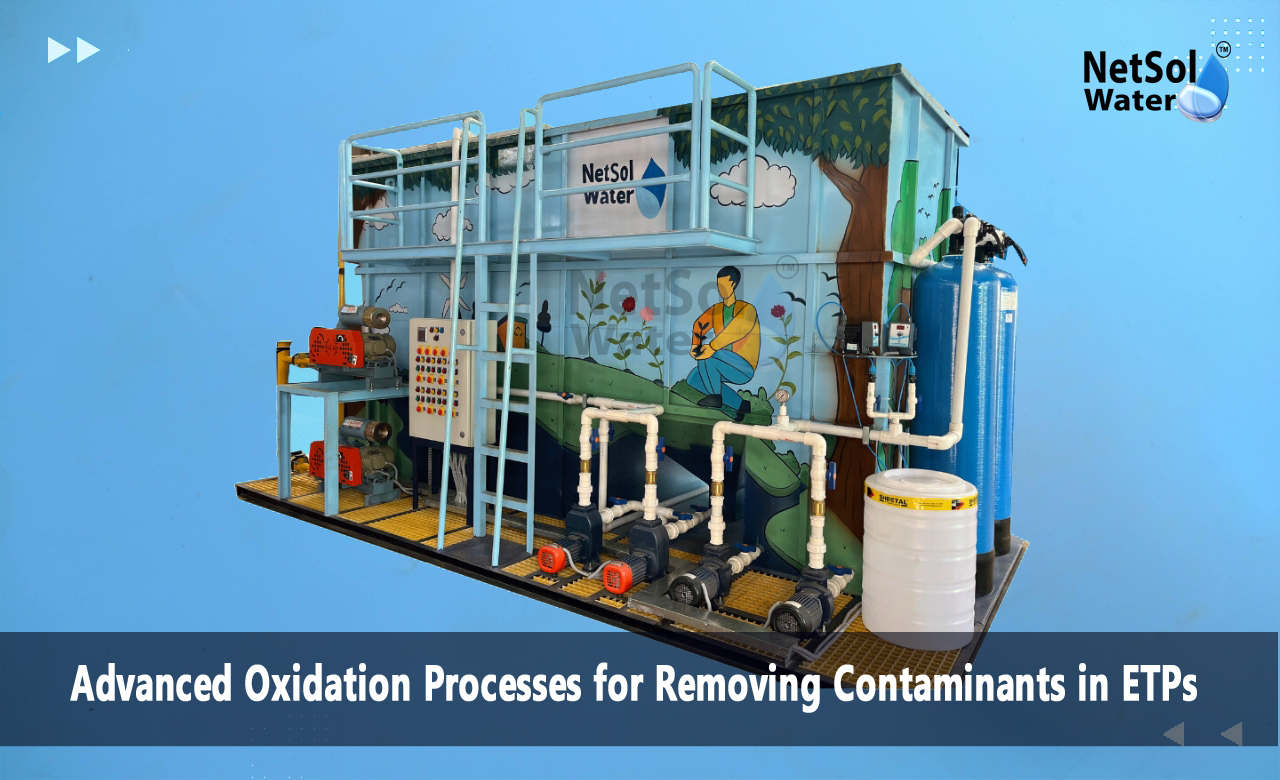Advanced Oxidation Processes for Removing Contaminants in ETPs
Industries worldwide now face a new challenge as emerging contaminants enter wastewater streams daily. Advanced oxidation processes (AOPs) transform these dangerous pollutants into harmless compounds through innovative chemical reactions. Traditional treatment methods fail as pharmaceuticals, pesticides, personal care products and other emerging contaminants populate industrial wastewater. Environmental regulations demand better solutions while public health concerns push industries toward advanced treatment options. AOPs destroy persistent pollutants completely instead of moving them from one place to another.
We will discuss how AOPs work what they accomplish in ETPs and how they eliminate emerging contaminants. You will discover the science that powers different AOP technologies learn practical implementation steps. This knowledge will guide industrial facilities to make smart choices when upgrading their water treatment systems.
The Science Behind Advanced Oxidation Processes
Advanced oxidation processes revolutionize industrial wastewater treatment by unleashing powerful oxidation reactions. These processes create hydroxyl radicals that actively destroy organic pollutants. Hydroxyl radicals attack contaminants through multiple pathways. They extract hydrogen atoms, bond to double bonds and exchange electrons with pollutants. These aggressive reactions persist until pollutants transform into carbon dioxide water and other safe compounds. This aggressive destruction makes AOPs particularly effective against stubborn compounds that escape conventional treatment methods.
Different Types of AOP Technologies
UV-Based Advanced Oxidation
UV light works with oxidants to amplify treatment power. UV radiation splits hydrogen peroxide molecules in UV/hydrogen peroxide systems. The resulting hydroxyl radicals attack nearby contaminants. UV/ozone systems follow similar principles but employ ozone as the primary oxidant. This combination achieves better results than either method could produce alone.
Fenton Process and Modified Versions
Iron catalyzes hydrogen peroxide in the Fenton process to generate hydroxyl radicals. This catalytic action triggers a cascade of oxidation reactions. Photo-Fenton systems incorporate UV light to boost radical production. Electro-Fenton approaches use electrical current to regenerate iron catalysts. These modifications boost efficiency and create new treatment possibilities.
Photocatalytic Oxidation
Light activates semiconductor materials like titanium dioxide in this process. UV exposure generates electron-hole pairs within these materials. These charged particles drive oxidation-reduction reactions at the catalyst surface. Organic pollutants break down as these reactions progress. The catalyst maintains its effectiveness through multiple treatment cycles which makes this approach economically attractive.
Integration of AOPs in Industrial ETPs
Advanced oxidation processes demand strategic placement within treatment systems. The location of AOP units determines their effectiveness. Most installations position AOPs after conventional treatment steps. This arrangement shields AOP components from overwhelming pollutant concentrations. It also creates ideal conditions for oxidation reactions to succeed.
Design Considerations
Process Selection: Industries generate distinct wastewater streams. Chemical plants face different challenges than pharmaceutical manufacturers. Contaminant properties guide AOP technology selection. Water parameters shape process decisions. Comprehensive wastewater analysis points toward the best treatment approach.
Equipment Configuration: AOP systems must accommodate fluctuating flow rates. Reactor designs dictate pollutant-oxidant contact time. The system needs chemical storage dosing equipment and monitoring tools. UV installations require radiation-resistant materials. All components must function as one integrated unit.
Control Systems: Modern AOPs employ smart control systems. These systems track oxidant concentrations UV intensity and other parameters. Operating conditions adjust automatically to maintain performance. Sensors continuously measure contaminant levels. Operators use this data to maximize efficiency and minimize costs.
Performance Optimization and Monitoring
Advanced oxidation processes excel when operators optimize their performance. Continuous monitoring ensures consistent results. Treatment plants must balance effectiveness against operational expenses. Success depends on understanding and controlling multiple variables.
Key Performance Factors
Chemical Dosing: Oxidant dosing determines treatment success. Insufficient oxidant leaves contaminants untouched. Excess oxidant wastes money without improving results. Laboratory tests establish correct dosage levels. Automated systems adjust chemical feed rates as conditions change.
Reaction Conditions: Temperature, pH and contact time influence oxidation effectiveness. Each technology performs best under specific conditions. Stable conditions produce reliable results. Regular monitoring shows when systems need adjustment.
System Maintenance: AOP equipment demands regular attention. UV lamps need cleaning to maintain effectiveness. Catalysts require periodic renewal or replacement. Planned maintenance prevents unexpected failures. This attention keeps treatment systems performing at peak levels.
Conclusion
Advanced oxidation processes lead the way in removing emerging contaminants from industrial ETPs. These technologies advance continuously offering better treatment solutions. Industries must meet increasingly strict treatment requirements. AOPs provide the tools to overcome these challenges while safeguarding environmental quality.
Want to harness advanced oxidation processes for your industrial ETP? Our water treatment experts will help you evaluate options and design effective solutions. Schedule a consultation today to discover how AOPs will transform your wastewater treatment system.
Contact Netsol Water at:
Phone: +91-965-060-8473, Email: enquiry@netsolwater.com



